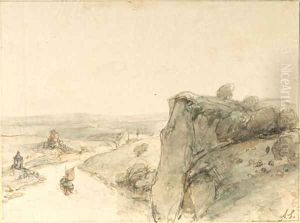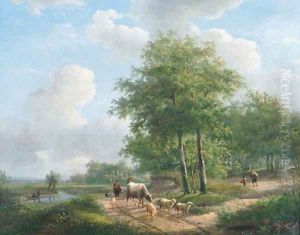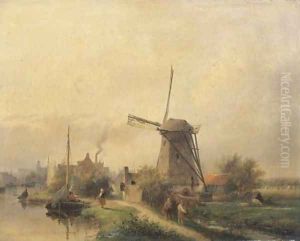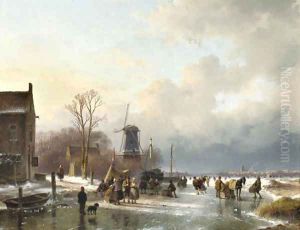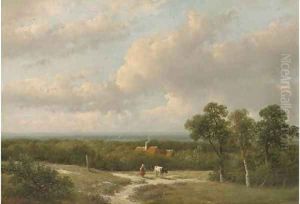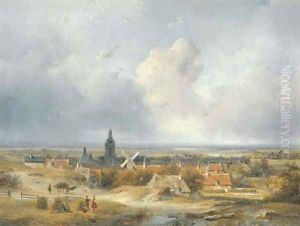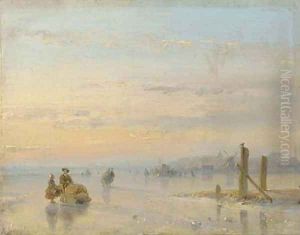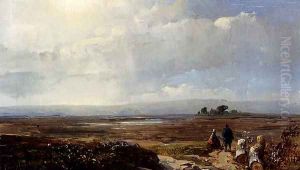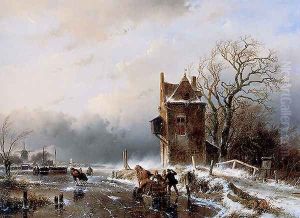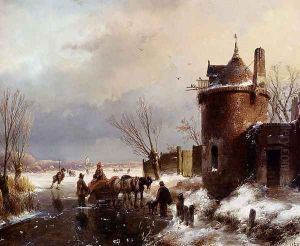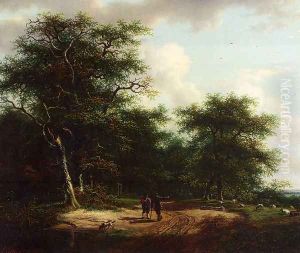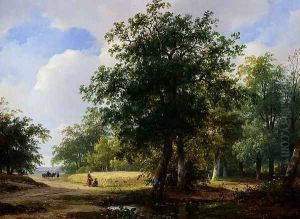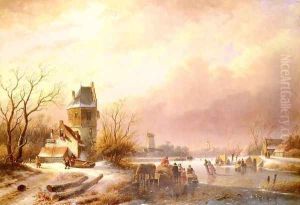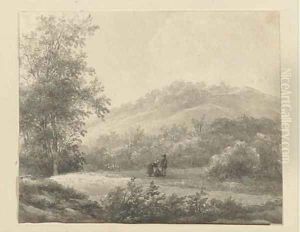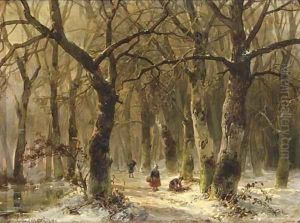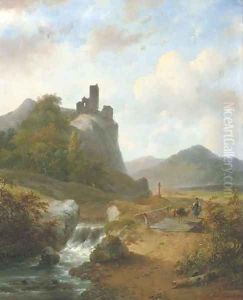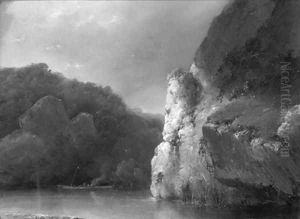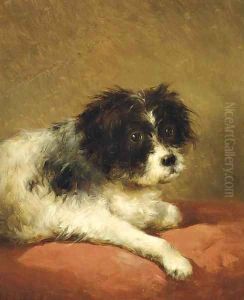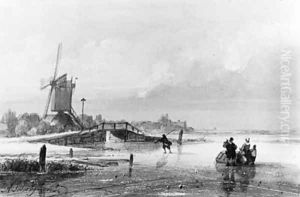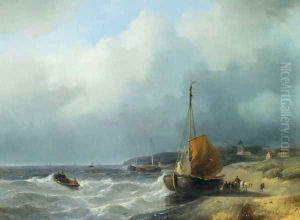Andreas Schelfhout Paintings
Andreas Schelfhout was a Dutch painter, etcher, and lithographer, known for his landscape paintings. He was born on February 16, 1787, in The Hague, Netherlands, into a family of artists; his father was a sculptor. Schelfhout initially worked in his father’s sculpture shop, but his interest turned towards painting, and he became a pupil of the landscape painters J.H. Prins and J.B.J. van Hulstyn.
During the early part of his career, Schelfhout established his reputation with his winter scenes that feature skaters, a typical Dutch theme. These works, which were highly detailed and carefully composed, became very popular, and he was soon regarded as one of the leading landscape artists of his time in the Netherlands. His paintings were characterized by a meticulous approach to depicting nature and a harmonious composition, often with a strong sense of atmospheric perspective.
As Schelfhout's career progressed, he also painted summer landscapes, seascapes, beach scenes, and river scenes, which were equally esteemed. He was particularly adept at capturing the interplay of light and shadow and the changing moods of the skies. His work reflects the Dutch romantic tradition, and he is often associated with the Hague School, although his style remained distinct and more classical than the progressive realist approach adopted by the later Hague School painters.
Schelfhout was also a teacher, and his studio became a training ground for the next generation of Dutch landscape artists. Among his students were notable painters such as Johan Jongkind and Charles Leickert, who would go on to carry forward his techniques and stylistic elements.
Throughout his life, Schelfhout garnered numerous honors and was a member of many art societies. His works were collected internationally and exhibited in various European capitals. He continued to paint until his death on April 19, 1870, in The Hague. Today, Andreas Schelfhout is remembered as one of the preeminent Dutch landscape painters of the 19th century, and his works are held in high esteem in museums and private collections worldwide.

